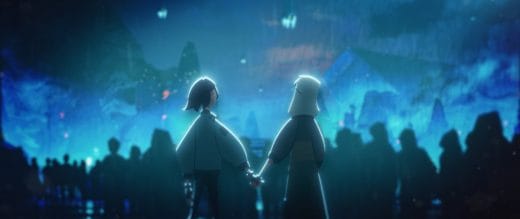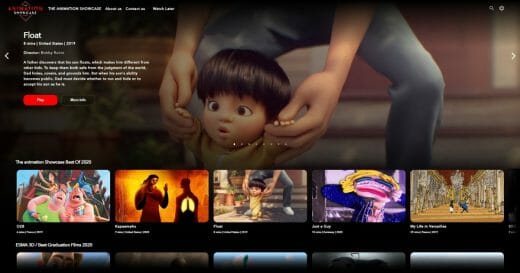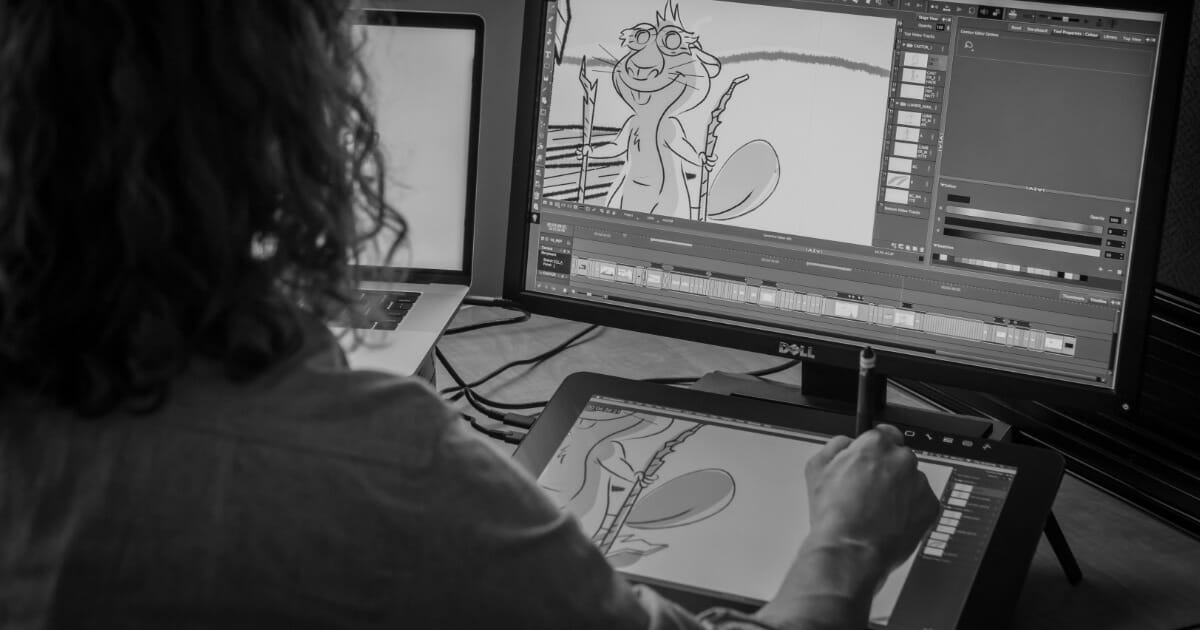
Do you dream of having a storied career in storyboarding, but aren’t sure where to start?
Storyboard artists are a crucial part of any animated production. They translate a script or concept into visual storytelling, and convey important elements of the film or episode’s narrative, from the basic plot points to expressive gestures and emotions. A storyboard then guides the production team through the pipeline, serving as a reference point throughout.
We caught up with several story artists to learn about their experiences in the industry. They shared with us what a day in the life of a storyboarder is like, and their favourite parts of the job. Read on to be inspired by the experiences of 6 talented artists, or visit our previous article in this series: What storyboard artists do, according to storyboard artists.
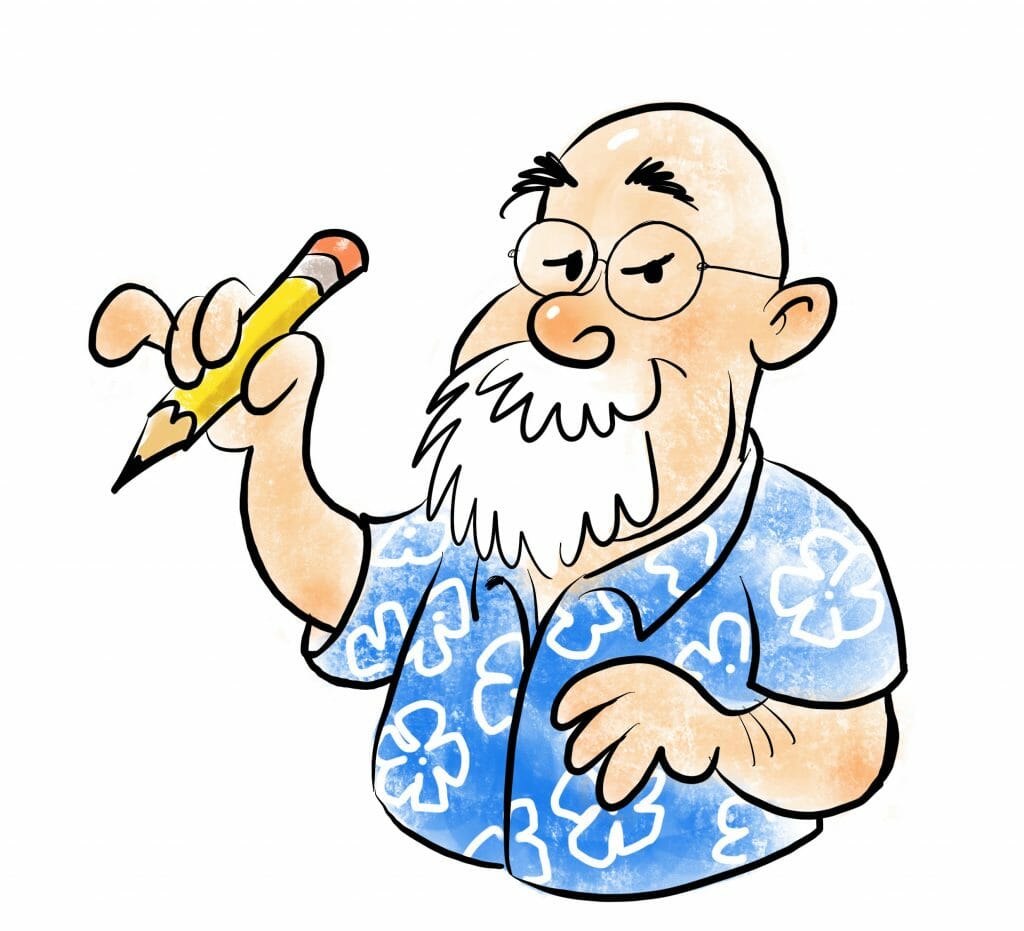
Tim Hodge: A day in the life of a story artist can vary. In my mind, the best days are the ones with few meetings; a day where you can sit down and concentrate on actually storyboarding. You read your script, dissect it, look for the highs and lows, the gags, the drama, and more. I like to start by printing out my script and doodling thumbnails in the margins. Usually specific shots stand out to me, ones that immediately project an image in my head. In the script I also look for spots that need clarity, and spots where I can enhance the humor. Adding a sight gag to a scene can really bring up the quality of an animation episode.
The size of the team that you work with as a story artist can vary too. I find the smaller the team the better, because you have more consistency that way. But of course, production has deadlines, and having more artists speeds up the process. Generally, I find a 22-minute episode will have between 2 and 4 artists. Any given TV show will have 3 to 5 teams that work in rotation. That way production can lean on one of the rotating teams to support launching a new episode every week.
It may sound corny, but I really enjoy watching an episode with a fresh audience. When I’m sick and tired of it, and I don’t think any of the jokes are funny anymore because I’ve been over them so many times. When I get to watch other people laugh at everything I worked on weeks before, it feels really rewarding. Imagine being a stand up comedian, and not getting laughs until 4 months after you told them!
You can find Tim Hodge’s work here.
Raha Dabiri: Draw, draw, draw some more! In my experience, a day in the life of a story artist revolves around drawing. Other common parts of my day include reading scripts, thumbnailing, checking in with the production’s director, and looking at references.
From my experience, 3 story artists are on a team under one director per episode. Many of the productions I’ve worked on have had 3 directors, which means we have a total of 9 story artists. I think one of my favourite parts of the job is pitching. And of course, being able to draw every day is such a pleasure. I also appreciate that there is a lot of room to grow and develop as an artist in my role.
You can find Raha Dabiri’s work here.
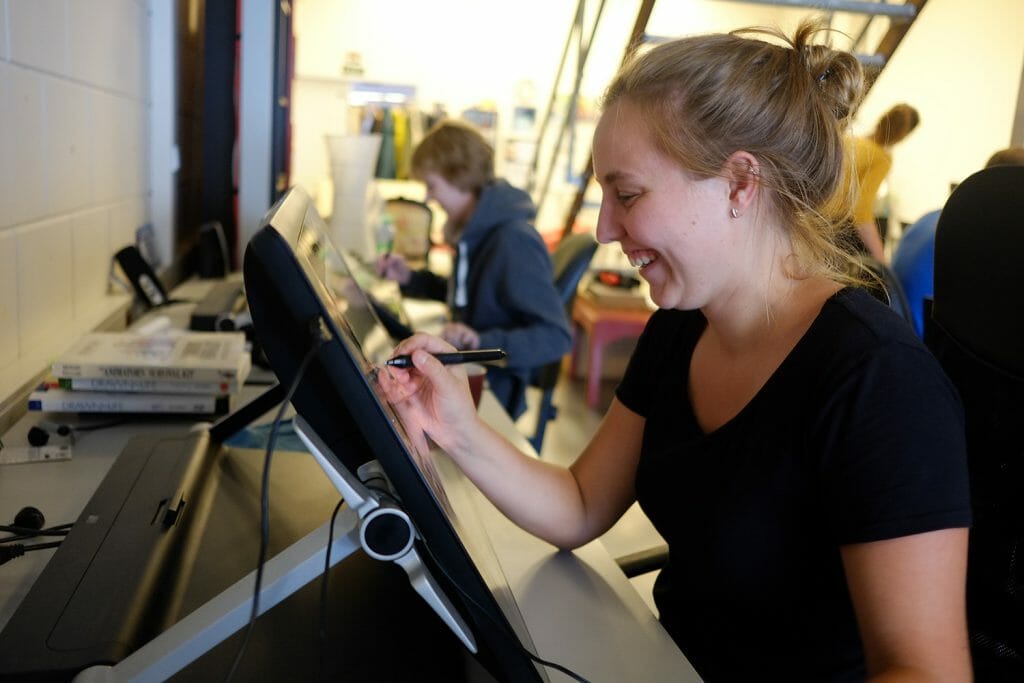
Lieke Wouters: A typical day as a story artist for me means heading into the studio, grabbing a cup of tea, having a chat with my colleagues and then getting to work! If it is my first day of work on a storyboard, I will usually sit down with the director. We go over the script together, make notes and share ideas. After that, I go to see if I can find references or things I need to look out for while working on the board. Then it’s time to open up Storyboard Pro and get going!
Typically when I get to work there is already a radio play of the episode. So the audio (or temporary audio) is already recorded and timed out roughly in the file. With that and the script, it’s just time to start drawing. If I have any questions or if I get stuck, there is always someone around who is willing to have a little look and to help out. A fresh look is just what you need sometimes.
For a TV series I worked on, I had to storyboard an average of 1 minute per day. I’d start with blocking out the entire episode and then go into more detail from there. I checked in regularly with my director to make sure I was on the right track, and to get some feedback. This was just one experience, I do find my days will vary between different productions.
Working as a story artist can definitely be challenging. There are so many components to communicating a script clearly. But the challenge comes with reward! I think what I love most about storyboarding is the endless possibilities of it. I have a great feeling when I can just draw very freely, and see a story come together.
You can find Lieke Wouters’ work here.
Michael Moloney: Most storyboards begin with a “storyboard handout.” In it, the director, executive producers, and supervising directors talk about the episode and share specific thoughts on locations, designs and tone. From there, you usually have 2 to 3 weeks for rough thumbnails. This part is lots of fun. You create the jokes, action, and staging – all the eureka! moments.
After pitching your thumbnails and receiving feedback, you start the cleanup phase. Put on some music or a podcast, and draw! Turn it in, rinse, and repeat. Every pipeline is slightly different, so story artists will all have different experiences, but this is in general the workflow for storyboarding. It can vary wildly between productions but usually you’ll be on a team of two story artists per episode with an episodic director leading. If the episode is 11 minutes it would be two story artists each on for 4 -5 weeks. If a 22 minute episode it can be 2 or 3 story artists but on a longer 8 week schedule.
I think what I enjoy most about storyboarding is watching an idea I drew out quickly be transformed into a beautiful design or compelling animation. It’s always delightful to see. And of course, pitching my jokes to the crew and making them laugh is always rewarding. It’s a great feeling and so satisfying to have an idea land the want you wanted it to.
You can find Michael Moloney’s work here.
#KnightsoftheLightTable are excited that we get to share more behind the scenes stuff on @TWRPband's #StarlightBrigade today!
— Old Swifty (@OldSwifty) June 25, 2019
Getting to board Starlight Brigade is one of the things I'm most proud of. I hope you guys enjoy these snippets!#KotLT #Storyboards #Animation pic.twitter.com/oHQeNPHnXq
India Swift: The pandemic has changed what a typical day looks like for me. Most storyboard artists are now working from home. This means you’re a bit more free to organize your own schedule, which comes with benefits. But it also means you miss out on the office energy, which is nice for connecting and collaborating with colleagues.
I’m currently living in Ireland but working with a lot of people across the pond in America, so right now my day skews a bit later than it used to. By working later in the day I can take advantage of the times when my leads and fellow story artists are up and about. My routine is to spend my morning working on art streams. I board, board, board, have some lunch, and board some more!
Storyboards are a communication device for the story and for the emotions that story carries. So, I love it when a sequence hits the way you want it to! During storyboard screenings, while everyone is watching the episode, the story artists are watching the viewer’s faces. We watch to see if they laugh when we hoped they would, and if they cried when we expected them to. When your hopes line up with reality and the audience is in tune with the boards, it’s the absolute best!
I think one of the things that has surprised me the most about boarding is how much my storytelling has been refined and how much my general draftsmanship and artistic ability has grown. When boarding, understanding perspective and being able to create clear poses in just a few lines is key, and honing in on that skill has had such a positive impact on my work.
You can see India Swift’s work on Starlight Brigade here.
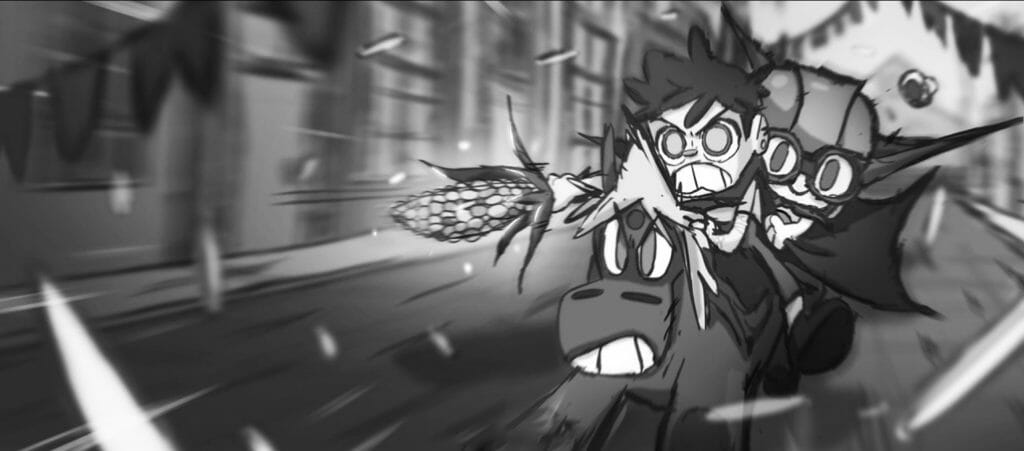
Ivan Freire: When I’m storyboarding, I break my assignments into tasks to help guide my day. This helps me keep my workflow organized. For example, I’ll set aside some time to rough panels, clean some panels, and pitch. For most projects I’ll start by reading the script or outline twice, while making notes. When doing this I find it’s helpful to think about the “core steps” in the three different acts of a story: the introduction, development, and conclusion. There’s also the Japanese method called Kishotenketsu, four acts. Those acts include the introduction, development, twist, and conclusion.
From there I work with post-its or I just sketch some ideas in a piece of paper, and when I think it is clear and working I move to Storyboard Pro. After that it’s usually pitching time. I present what I have and members of the production give feedback. Then it’s a matter of continuing to work on the storyboard mixed in with more pitches to make sure I’m on the right track.
In Brazil it’s common to work alone, 1 person per storyboard. Nowadays, some studios are splitting the script in two parts so that 2 story artists can work together, and sometimes the team includes a revisionist to improve the drawings. My favourite part of storyboarding is the pitching. Getting to show your episodes to the team and read the lines for every character is very fun and inspiring!
You can see Ivan Freire’s work here.
Interested in trying your hand at storyboarding? Storyboard Pro is where every great story begins. Download a 21-day trial and get started with our free introductory tutorials.
